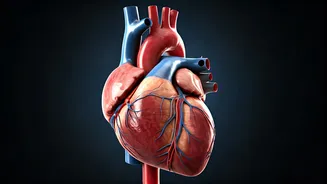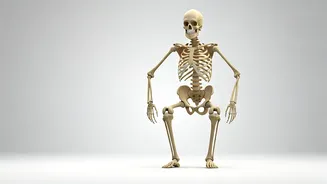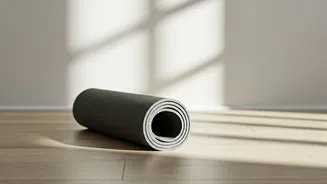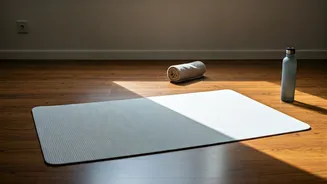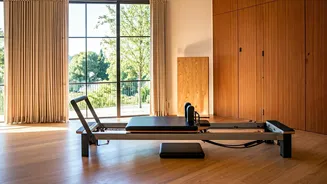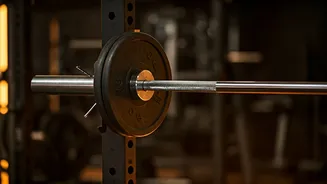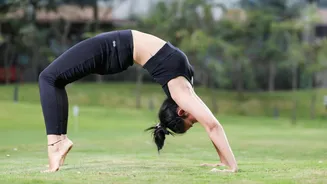Single-Leg Stretch
The single-leg stretch is an excellent Pilates exercise that concentrates on core stability and coordination. To begin, lie on your back with your knees
bent and feet flat on the floor, similar to the starting position for many abdominal exercises. Gently bring one knee towards your chest, clasping your hands either just below the knee or on the shin. Extend the other leg straight out, keeping it close to the floor without letting it touch. Inhale deeply, and as you exhale, switch legs, bringing the extended leg in and extending the bent leg out. This continuous movement, alternating legs, effectively challenges the core muscles. The exercise not only boosts the strength of your abdominals but also improves balance and flexibility, all while focusing on mindful breathing. Perform several repetitions, maintaining a steady pace to feel the full benefits.
Knee Taps Exercise
Knee taps are a foundational Pilates exercise designed to engage the core muscles while minimizing strain on the lower back. Start by lying on your back with your knees bent and feet flat on the floor. Engage your core, drawing your navel towards your spine to stabilize your lower back. Maintaining this core engagement, slowly lift both feet off the floor, bringing your knees to a 90-degree angle. From this position, gently tap one foot down towards the floor, but without letting it touch. Simultaneously, tap the other foot. Alternate tapping each foot to the floor, focusing on maintaining the stability of your core. This exercise reinforces core control, improves coordination, and strengthens the muscles that support your spine. The small movements focus the effort, requiring a greater awareness of your posture and form.
Oblique Twists
Oblique twists are a fantastic Pilates exercise that targets the oblique muscles, which run along the sides of your abdomen. To execute this exercise, begin by lying on your back with your knees bent and feet flat on the floor. Engage your core to stabilize your spine, and extend your arms out to the sides at shoulder height. Keeping your shoulders and upper back in contact with the floor, gently twist your knees to one side, feeling a stretch in your obliques. Pause for a moment, then return to the center and twist your knees to the opposite side. This controlled twisting motion works your core, improves your flexibility, and helps to tone your waistline. The slow, deliberate movements ensure that each muscle group is fully engaged, maximizing the effectiveness of the exercise. Remember to focus on your breathing, inhaling as you return to the center and exhaling as you twist.
Plank With Leg Extension
The plank with leg extension is a dynamic Pilates exercise that enhances core strength and stability. Assume the standard plank position: forearms on the floor, directly beneath your shoulders, with your body forming a straight line from head to heels. Engage your core, squeezing your abdominal muscles to maintain this position. From this stable plank, slowly lift one leg off the floor, extending it behind you, keeping your body aligned. Hold the leg extension for a few seconds, concentrating on maintaining the plank without tilting your hips. Return the leg to the floor and repeat on the other side. This exercise improves core stability, balance, and strengthens the muscles in your abdomen, back, and legs. It increases the challenge of a regular plank, requiring more control and coordination to avoid shifting your body.
Double-Leg Lift
The double-leg lift is a challenging Pilates exercise that concentrates on the lower abdominal muscles. Lie on your back with your legs extended straight up towards the ceiling. Engage your core to stabilize your spine and maintain contact with the floor. Slowly lower both legs toward the floor, maintaining a straight line, but stop before your lower back arches. The key is to keep your core engaged throughout the movement, preventing your lower back from lifting off the ground. Once you reach your maximum comfortable range, slowly lift both legs back up to the starting position. This exercise builds core strength and improves your control over your movements, particularly in your lower abdomen. The emphasis is on precise movements and control, making it highly effective for strengthening the core muscles.
Proper Breathing Technique
Breathing is fundamental to practicing Pilates effectively, and mastering the technique enhances the exercise's overall impact. Begin by inhaling deeply, expanding your rib cage to fill your lungs fully, and feel your abdomen relax. As you move into each exercise, exhale slowly and deliberately, drawing your navel towards your spine. This action activates your core muscles and supports your spine, enhancing the effectiveness of each movement. Coordinating your breath with the movements intensifies the benefits, and the exhalation is often paired with the exertion, while the inhalation occurs during rest or preparatory phases. Maintaining a mindful awareness of your breath will not only improve your physical performance but also facilitate relaxation, making your workout more effective and enjoyable.


